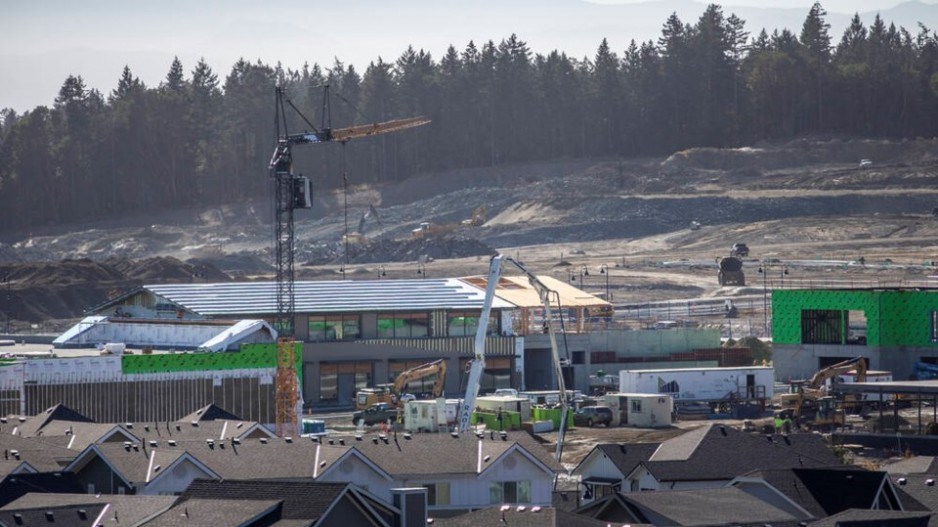The Ministry of Labour on Tuesday outlined new age requirements for young workers, saying they must be at least 16 before working in construction or doing jobs from dangerous heights, and at least 18 before they can work in a sawmill, use a chainsaw or drill for gas and oil.
The amended employment standard regulations take effect Jan. 1.
The changes come late for Jessica Kruger, owner of Vancouver-based The Stubborn Baker. In 2008, at 15, she was in her second week as a house painter when she fainted and fell two storeys off a ladder, suffering life-altering injuries.
“Being so young, I felt like I had a lot to prove and never questioned the safety of any of the jobs I was required to do — there were no restrictions in place demanding I wear a harness and I didn’t know any better,” Kruger said in a statement.
“If these regulations had been in place, I probably wouldn’t require a wheelchair today, so I applaud the B.C. government for working to protect young people now and moving forward.”
WorkSafe B.C. has collected tragic stories over the years of young people on jobs sites — happy to find work and afraid to ask questions — who have suffered similar life-altering experiences: A forklift driver paralysed after a load of plywood slipped off and broke his back, a lumber processor who lost his leg while tangled in a chain, and a pizza dough maker who lost three fingers in a machine accident.
In 2021, WorkSafe B.C. processed 7,125 claims related to injuries from young workers, defined as under 25. Injuries were most likely to occur in service-sector jobs (2,801 claims), followed by retail and wholesale (1,335 claims), and construction (1,258 claims). In the last five years, 16 young workers have died in workplace incidents.
Between 2012 and 2021, WorkSafe B.C. said about $26.4 million was paid in job-related disability claims for workers who were 16 to 18 at the time of the injury.
More than half of all serious injuries occur during the first six months of employment, said Jacqueline Holmes, manager of prevention field services at WorkSafe B.C. She said injuries can result from inadequate training, orientation and supervision, inexperience, or a reluctance to speak up, ask questions and raise health and safety concerns.
To develop the new age requirements, the ministry looked at WorkSafe B.C. injury data and other jurisdictions’ labour laws relating to hazardous employment. Several jobs were identified as hazardous for young workers, including construction, forestry, food processing, the oil, gas and power sectors, work that involves asbestos removal, and being in confined spaces.
Consultations on the draft rules were held with industry, labour, safety and skills training groups.
“For a young person, working can be a rewarding and valuable experience, important for personal growth and setting them on a path to their own success,” Harry Bains, minister of labour, said in a statement. “But it must be work that is both physically and mentally appropriate for their age, with the necessary training and supervision.”
The ministry said to ensure youth can still access apprenticeship and training opportunities, the age restrictions will not apply to industry training overseen by Skilled Trades B.C.
Since the regulations come into effect Jan. 1, the ministry said employers have time to adjust the work performed by existing young employees.
Current employees who are within six months of reaching the prescribed age will be excluded from the age requirements.
Under the new rules, a minimum age of 16 is required to work in:
• construction
• silviculture
• forest firefighting
• working from heights that require fall protection
A minimum age of 18:
• tree falling and logging
• using a chainsaw
• production process at a pulp, paper, saw, shake or shingle mill
• production process at a foundry, metal processing or metal fabrication operation, refinery or smelter
• power-line construction or maintenance where an electrical hazard exists
• oil or gas field servicing and drilling
• work with dangerous equipment in fish, meat or poultry processing facilities
• silica process/exposure to silica dust
• work in which a worker is or may be exposed to potentially harmful levels of asbestos
• exposure to harmful levels of radiation
• working in a confined space or underground workings
• work requiring a respirator




